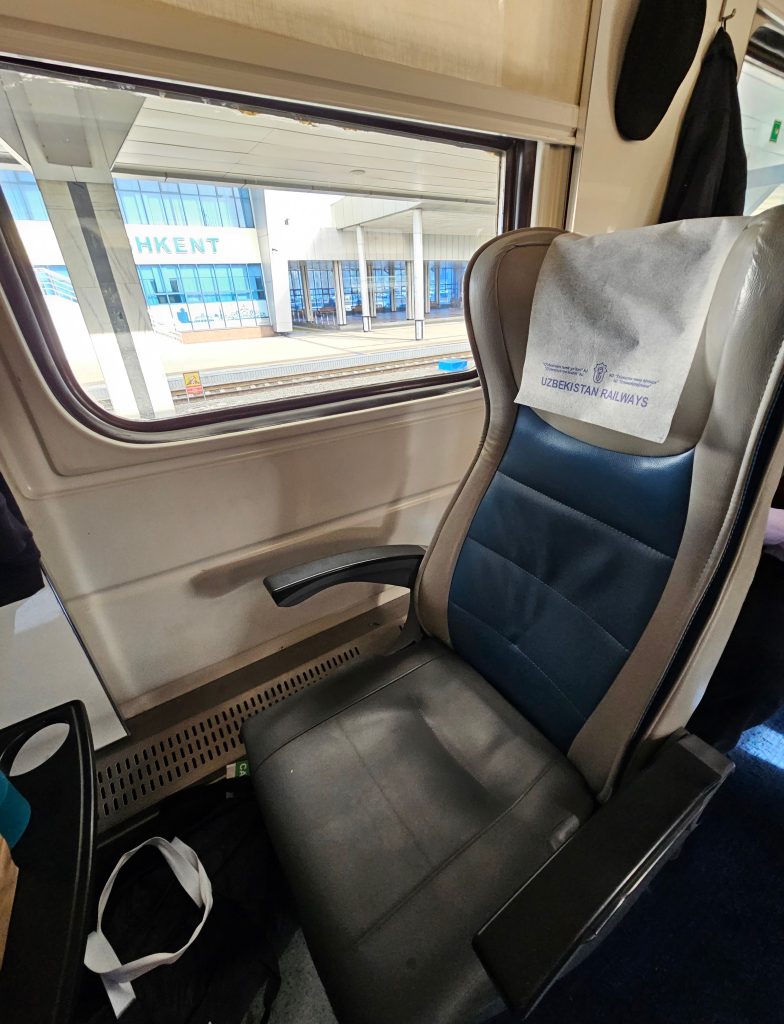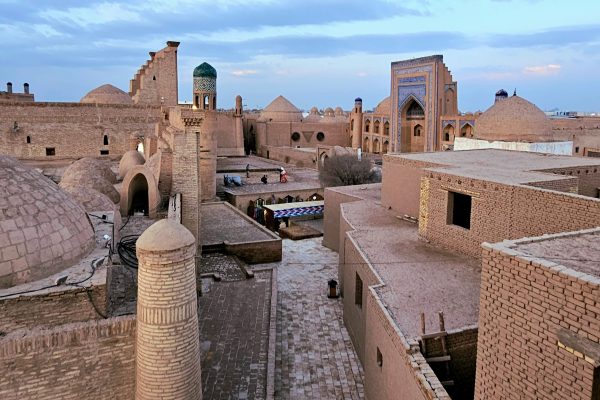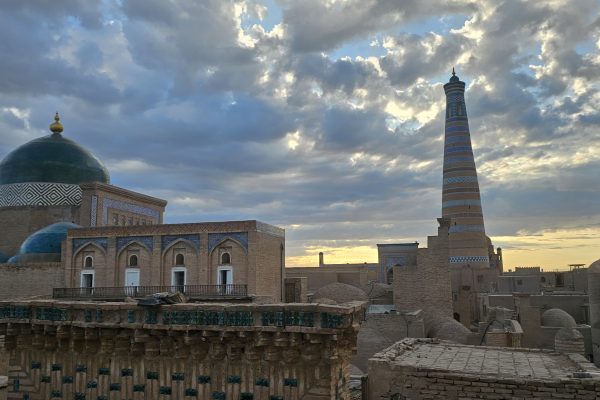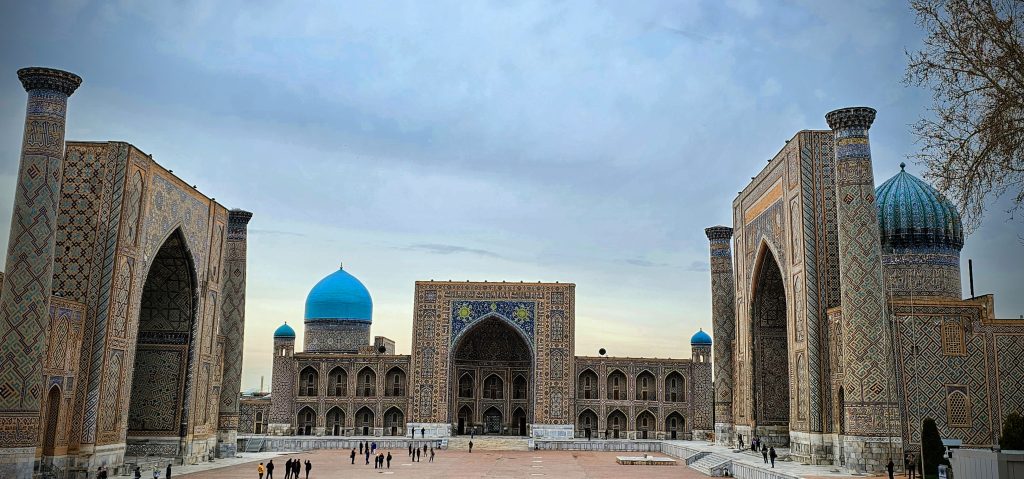
Samarkand is one of those places that sounds almost mythical, steeped in history of the Silk Road, ancient empires, and beautiful blue tiles glistening under the sun. My time in this legendary city was a mix of these historical sights and an unexpected connections that left a lasting impression.
Registan Square
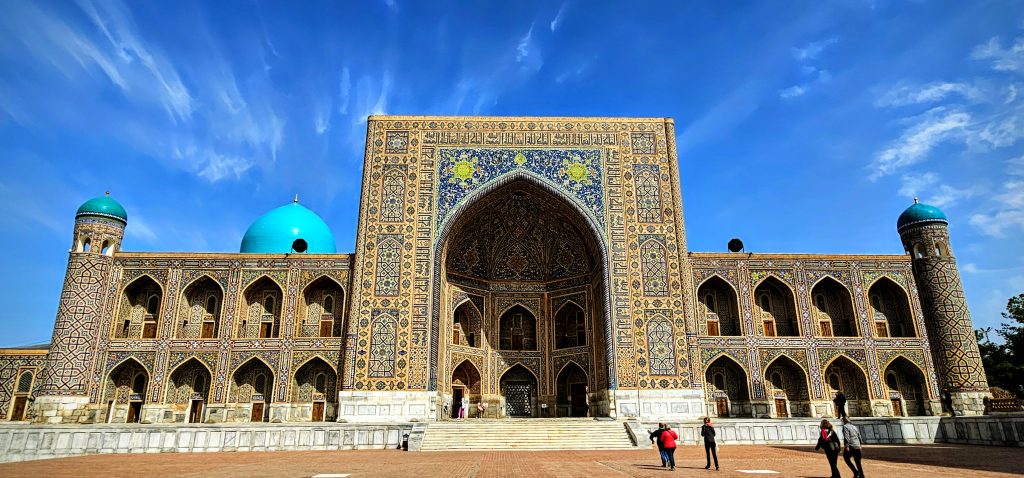
Registan Square, a UNESCO world heritage, is Samarkand’s centrepiece – a massive square flanked by three enormous madrassas, Ulugh Beg, Sher-Dor, and Tilya-Kori. It is the kind of place plastered every postcard for a good reason. Travellers venture to Samarkand to see this architectural splendour created by the world’s forgotten tyrant, Amir Timur. The square has a rich history background dating back to the 15th and 17th century during the Timurid Dynasty. It served as the centre for academic, cultural, and commercial activities in the region. The scale of the square is massive, and pictures don’t do any justice. These monuments have survived many earthquakes over the years.
Note that your entrance is multiple entrance, valid all days long, which means you can come back to photograph the monument at different times of the days. Make sure you tell the security so they won’t tear your ticket when you exit.
The first time I stepped into the square, I was overwhelmed by the scale and the beauty of it all. The intricate tile work with its shades of blue glowed in the sunlight. I could spend hours just staring at it, but I was struck by the buzz of life around the square.
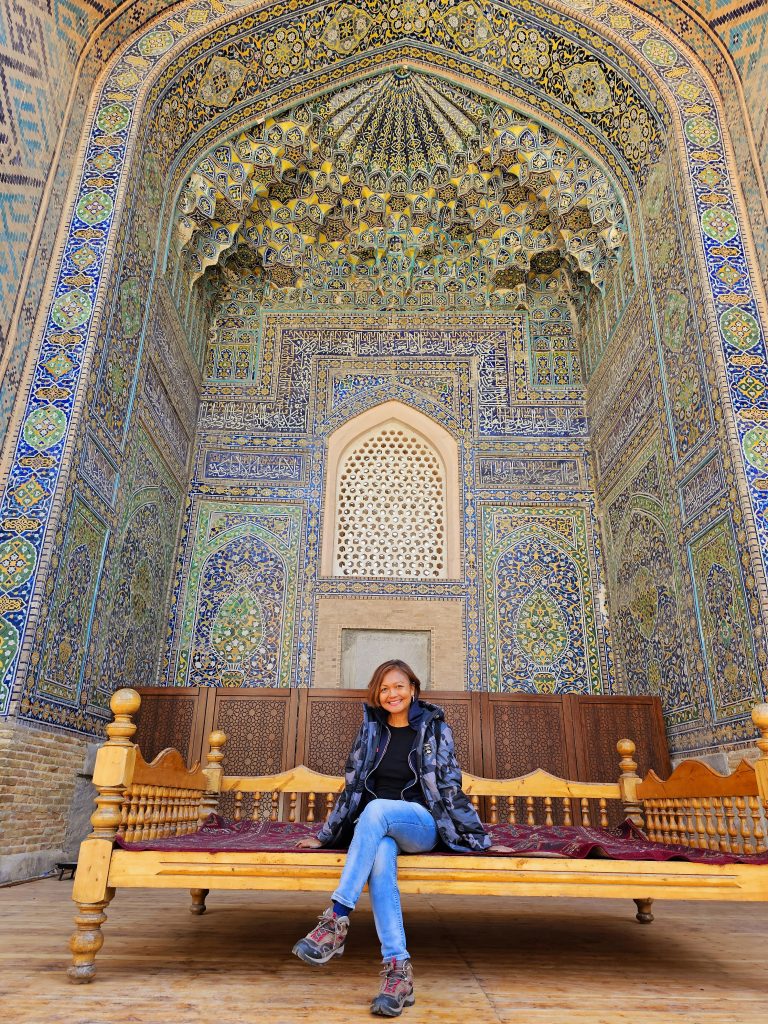
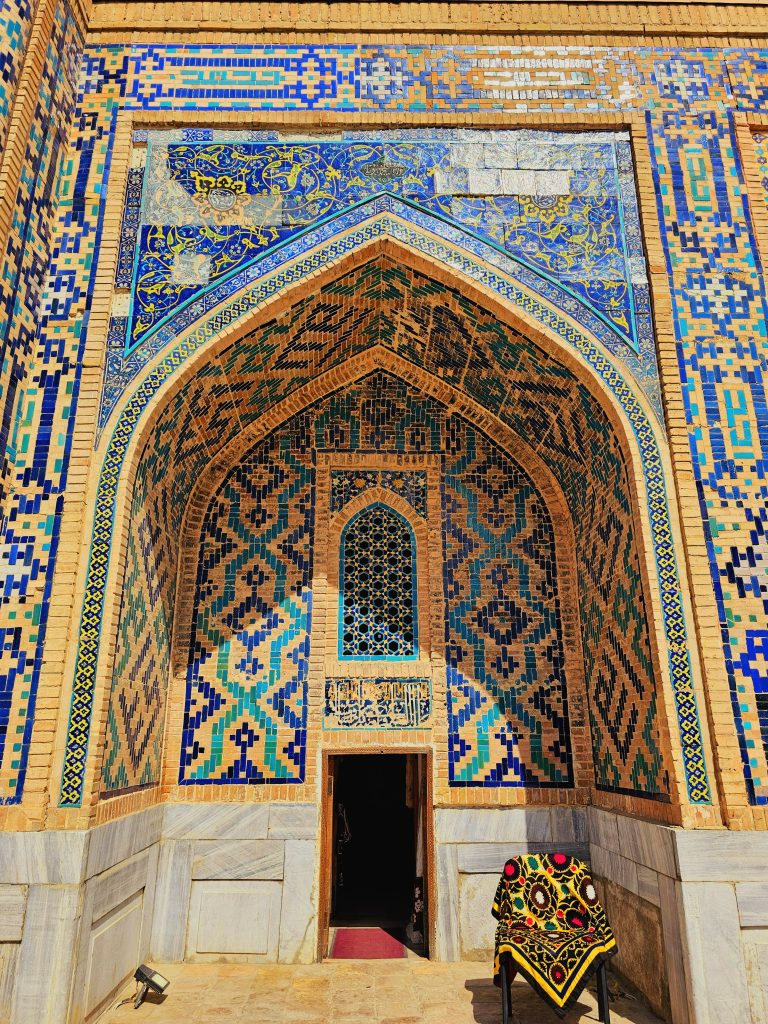
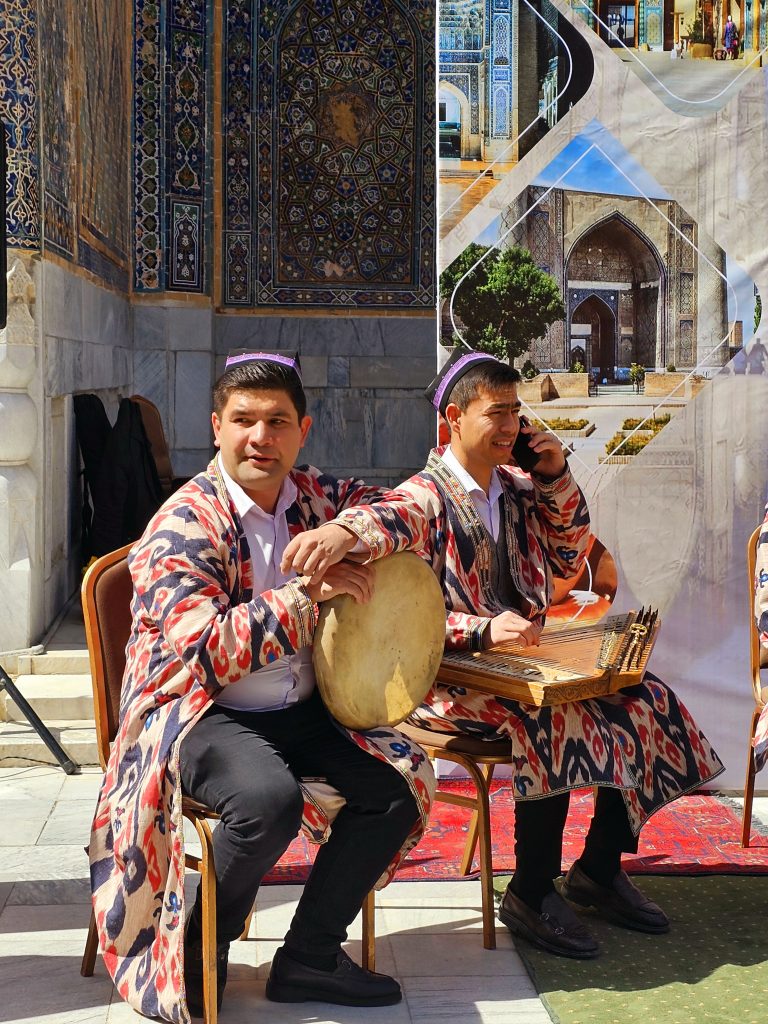
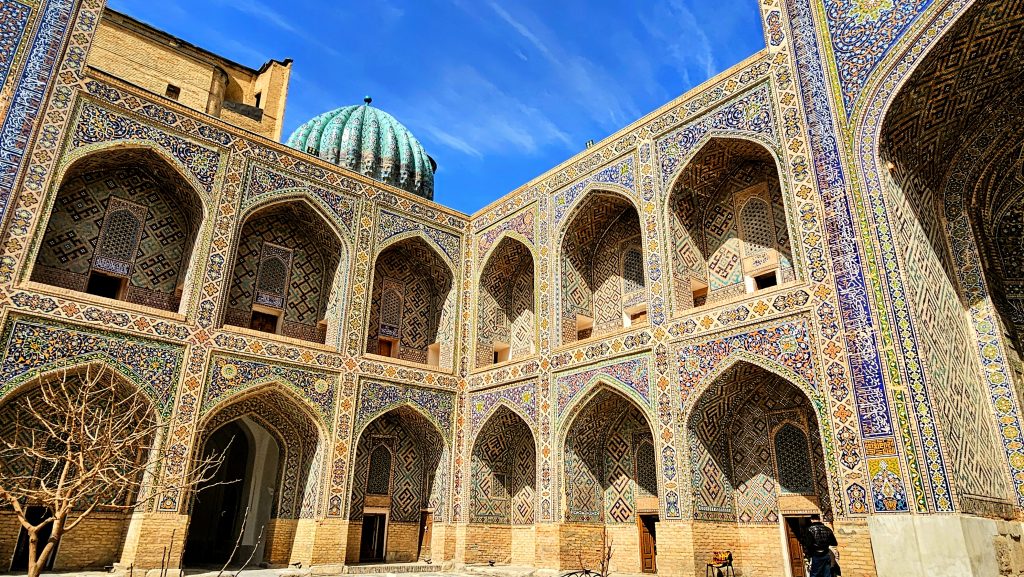
Shah-i-Zinda
Another must-see is Shah-i-Zinda, a long avenue of mausoleums covered in some of the most intricate tilework you’ll ever see. As you walk through, it feels like stepping back in time. The tombs dating back to 14th and 15th century are incredibly well-preserved. The atmosphere here is different compared to Registan Square; it is quieter and more contemplative.
Bibi-Khanum Mosque
The Bibi-Khanum Mosque is an impressive tribute to grand gestures of love. In the days of yore, people didn’t just send a bouquet or plan a romantic getaway, they built monumental mosques! Imagine telling your loved ones, ‘I love you so much I built a mosque!’ Legend has it that it was built by Timur’s wife, Bibi-Khanum as a gift for her husband who was away on military campaigns. The idea was to give him a gift, at the same time immortalising her name – to build a grandiose mosque that would surpass all existing buildings and decorations. The story goes that she was persuaded by the architect, who fell in love with her, to let him kiss her in exchange for speeding up construction. When Timur returned and discovered this, he ordered the architect to be executed. The mosque is a bit weathered now, but its scale and the intricate details still impress.
Walking through the mosque, I can almost feel the weight of its history – the love, the betrayal, the sheer ambition of it all. And yet despite the somewhat crumbling state, it remains a powerful symbol of the city’s past. I spent some time here, just absorbing the atmosphere, imagining the grandeur mosque’s heyday.
Pity I didn’t have any photos of Shah-i-Zinda and Bibi-Khanum mosque. My phone battery died when I visited these two landmarks.
Siyab Bazaar
No visit to Samarkand is complete without a trip to Siyab Bazaar, the city’s famous market. The moment you step into it, you’re hit with a blast of colours, sounds,a dn smells. It is chaotic the best way possible – vendors shouting out their prices, piles of spices and nuts in every shade imaginable, and the smell of freshly baked non bread wafting through the air.
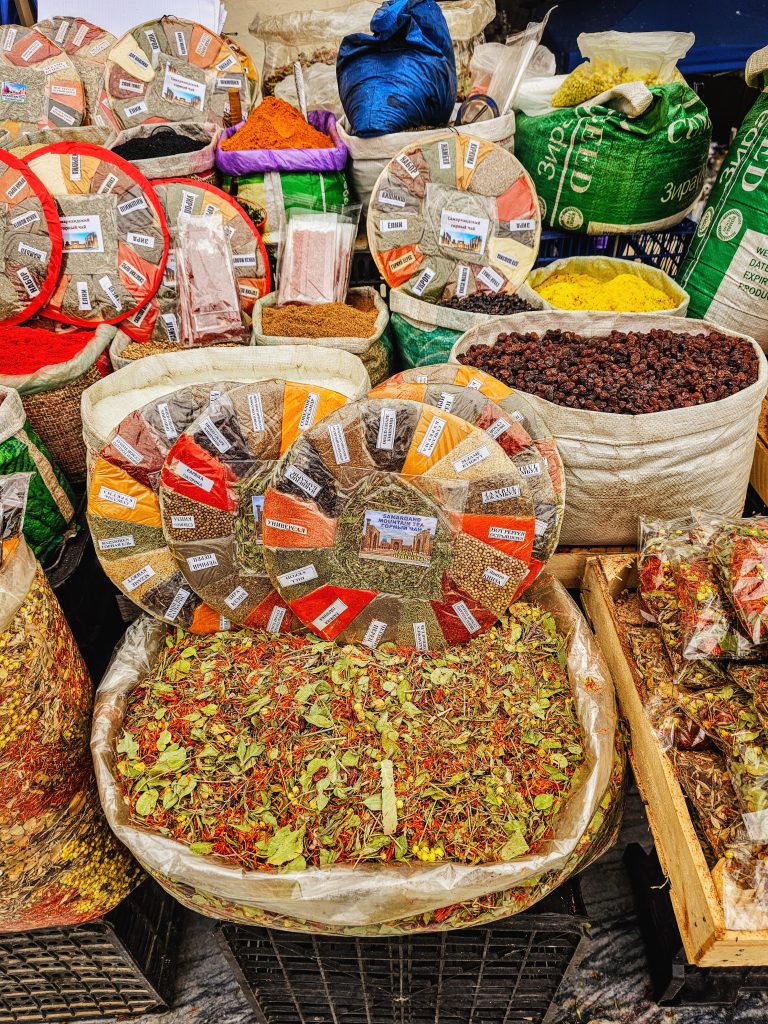
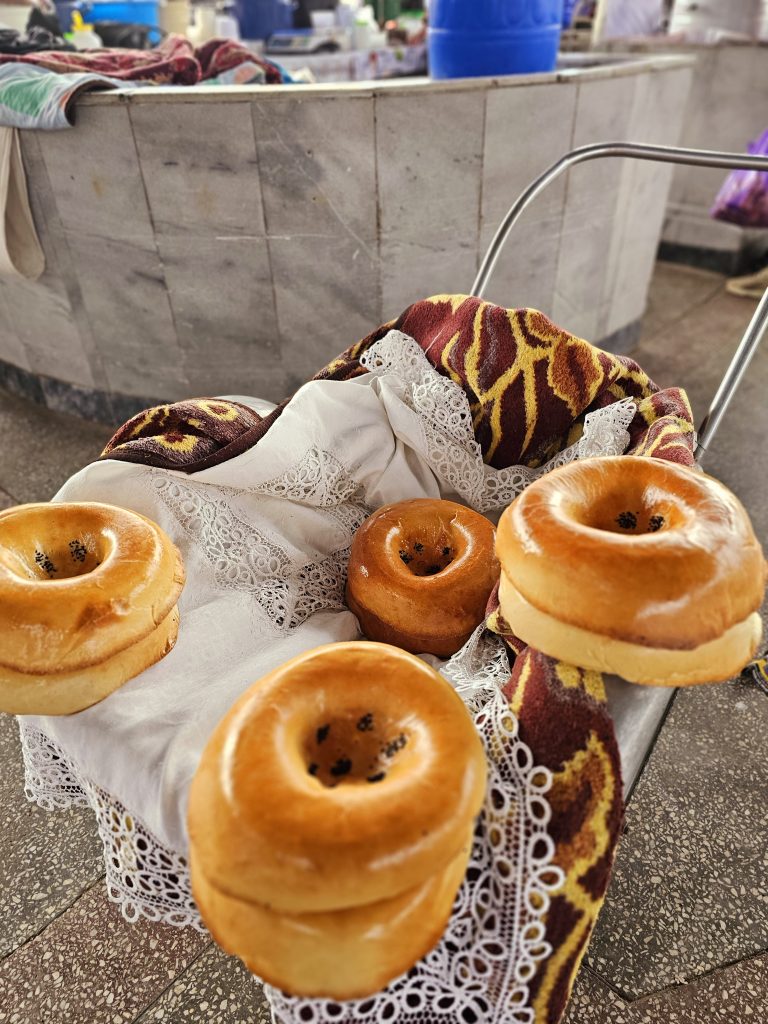
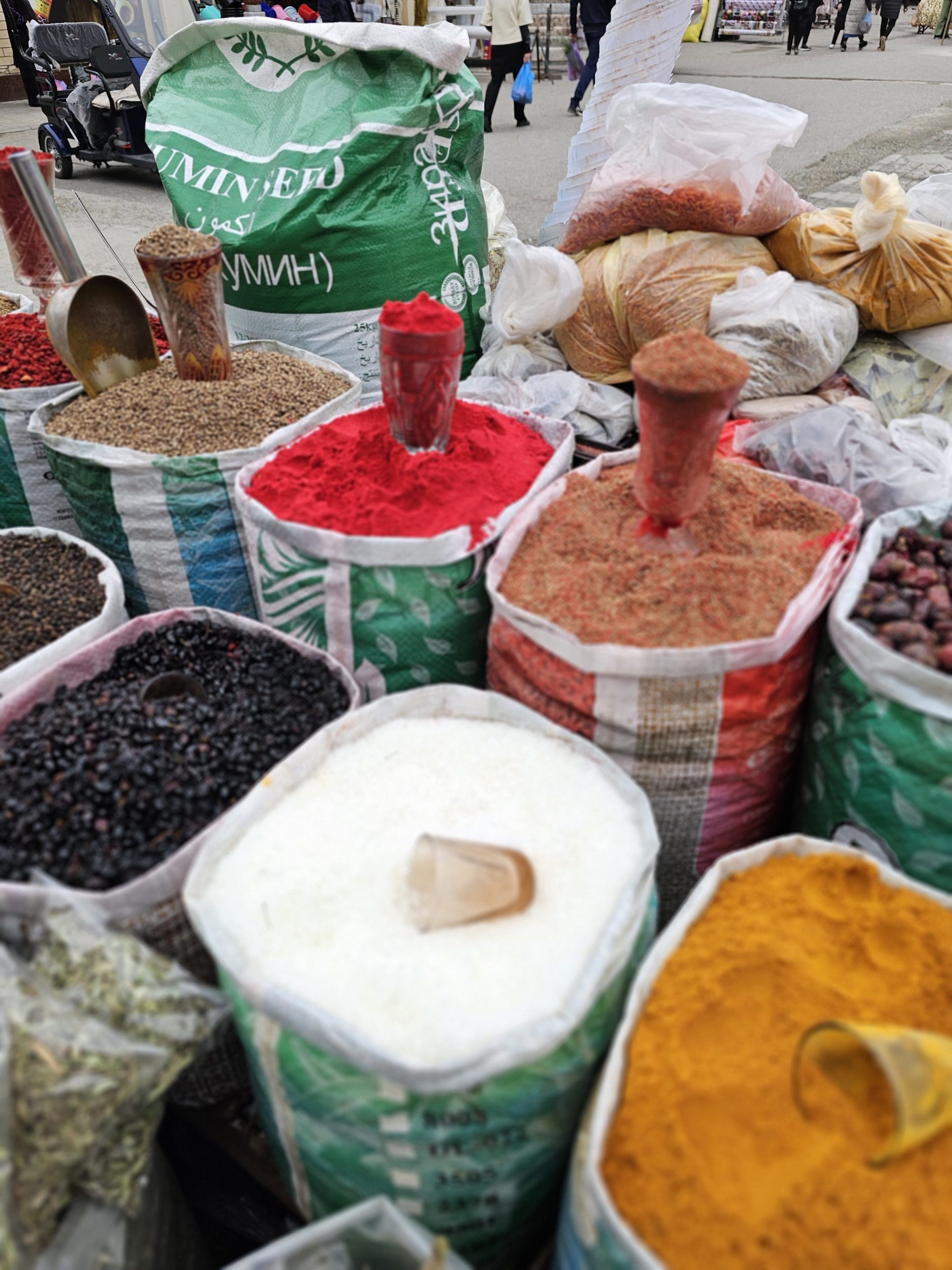
I wandered through the stalls, sampling from the dried fruits to nougats. One stall selling grilled chicken caught my eye. The chicken was delicious, perfectly grilled and spiced. I complimented the seller with two thumbs up, and in return, he gae me some non for free. I was genuinely touched by his act of kindness. I later bought a box of nougat from another vendor and gave it to him wishing him ‘Ramadan Kareem.’ The smile on his face was priceless. It is these little interactions that make a place feel like more than just a stop on a tourist itinerary.
What Which Remains Special To Me About Samarkand
One of the most memorable experiences of my time in Samarkand wasn’t the famous landmark, but on a simple pedestrian path. As I was walking, I noticed three teenage girls sitting on the curb chatting animatedly. They were discussing their English homework. I couldn’t resist butting with a quick assalamualaikum. They looked at me with surprise and burst into giggles.
We ended up chatting for a while. I offered to help them with their English essay, and they were thrilled. It was pure fun, a real cultural exchange – me helping them English and them teaching me a few words in Uzbek. They asked if we could meet again the next day at the same spot. They didn’t have phones, so we had to rely on old-fashioned trust.
Sure enough they were there the next day, at 5pm, as promised, waiting with bright smiles. I bought them some chocolates and they surprised me with some Samarkand souvenirs. I was genuinely touched. It was one of these moments that remind me why I travel in the first place – to connect with people in ways that transcends language and culture.
You may find more of my travel tale on Uzbekistan here.
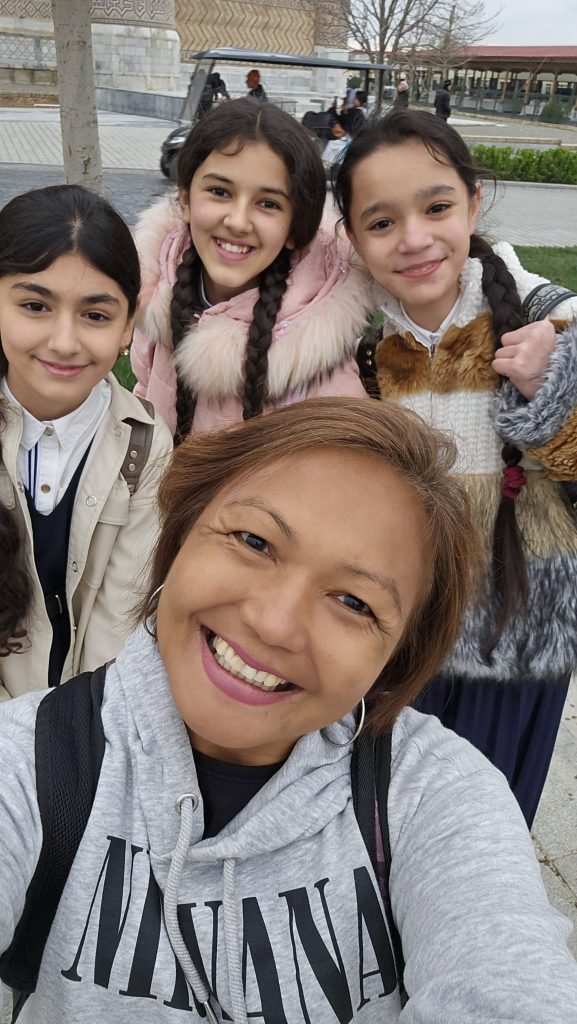
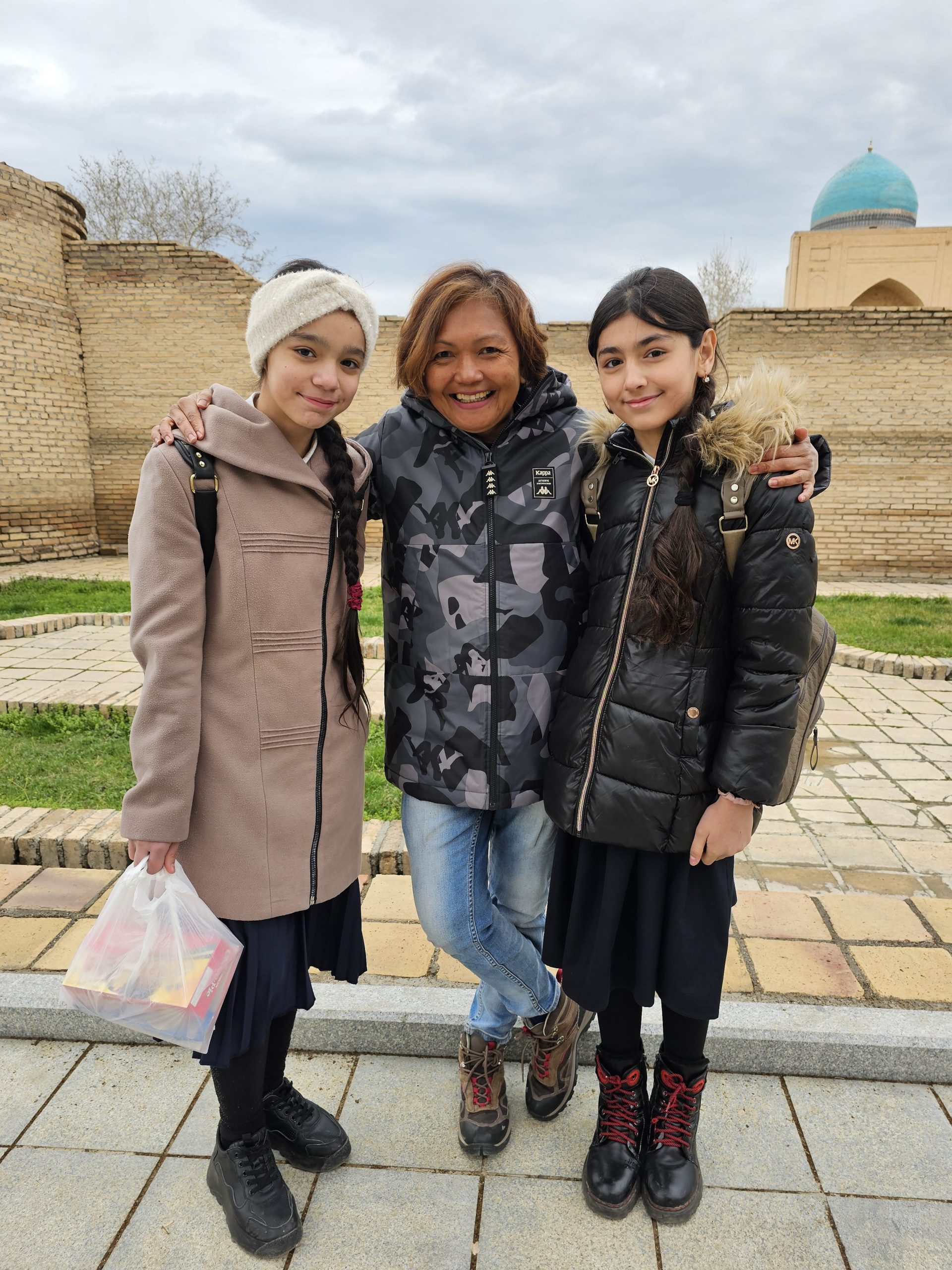

A Change In Direction
After 10 days of exploring Uzbekistan’s historical sites, I felt the need for a change of scenery. The epic adventuress in me craved for a more authentic experience in nature. I wanted to see the side of Central Asia that was less polished, more raw.
I packed my rucksack and set my sights on Tajikistan, eager for an adventure off the beaten path. And with that, I left Samarkand behind, but with a sense of gratitude for the people I met and the unexpected friendships.
Samarkand : Getting There
By Plane: Samarkand is accessible by plane and train. Domestic flights serves Samarkand from Tashkent and Uegench (Khiva) and it is also connected internationally to Moscow, Istanbul and st. Petersburg. Once we land in Samarkand, the city centre is a short taxi ride away.
By Train: there are two types of trains to choose from, the Afrosiyob and the Sharq. Both trains can be booked through the official websites here .
The Afrosiyob is a high-speed train, making the trip to Samarkand in about 2 hours, It is fast, modern, and comfortable. The Sharq train is a bit slower, taking an additional forty five minutes. I bought the business class seats and it was surprisingly clean and comfortable.
